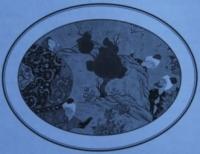You are here
Park Bagi-Maidan in Samarkand.

Popular vacation destination Samarkand.
“Amir Temur ordered to build a garden on the outskirts of the beautiful Kani Valley, the beauty of which would surpass all others previously created in his empire (gardens). Astrologers predicted a happy hour to bookmark it, and architects drew a plan for the location of alleys and lawns. They laid the foundation of a square plan of one and a half thousand Ghazi aside, and in the middle of each of them staged high entrances. The vaulted ceilings of the palace were decorated with stucco and mosaic decorations, and the surrounding walls were covered with tiles. In the four corners of the garden, tall pavilions were erected, decorated with tiles of wonderful colors. The garden was divided by alleys with excellent symmetry into square parterres and small garden areas of various shapes. Amir Temur wished that sycamore trees would be planted on the sides of these avenues, that some areas should be planted with fruit trees, and others only with flowers. When the garden began to correspond to his desire, he called it Bagi Dilkusha (“The Garden of Enchanting Hearts”)
The Bag-i Dilkush (“The Garden of the Captivating Hearts”) under Amir Temur in the autumn of 1397 (799) in the Kani Valley, Sharaf al-Din Ali Yazdi about the Bag-i-Dilkush.
Rambler in the mountains Uzbekistan.
A stream from Zarafshan was set aside specifically for the park. Under Ulugbek, elegant tents were set up here, pavilions were built. In the depths was the luxurious palace of Chil-Sutun ("Forty-Colonel"). A two-story building with small corners on the corners, stone pillars decorated with ornamental carvings.
Most of the columns were brought from hikes, the second part was made by local craftsmen. Pavilion Chini-Khan ("Porcelain Pavilion") was located in the garden next door. It was an elegant structure, lined with blue-white tiles brought from China. Unfortunately, the building has not survived to this day.
Enlightener:
"Religious and spiritual monuments of Central Asia." Author M. Khashimov. Saga Publishing, 2001 Collection “Architectural and archeological monuments of Uzbekistan”, Saga, 2003. “Samarkand. Reference Guide ", Authors I.Umnyakov, Y. Alekserov. Arapov A.V. Samarkand "Masterpieces of Central Asia". Media-Asia Sanat Publishing House 2008. Arapov A.V. “Samarkand. Guidebook Publishing house Media-Asia San’ath 2007.







